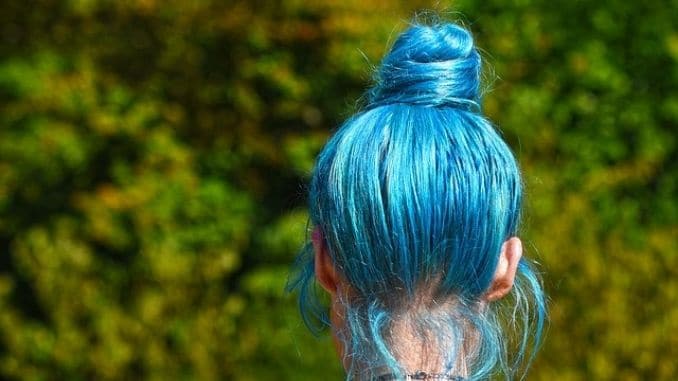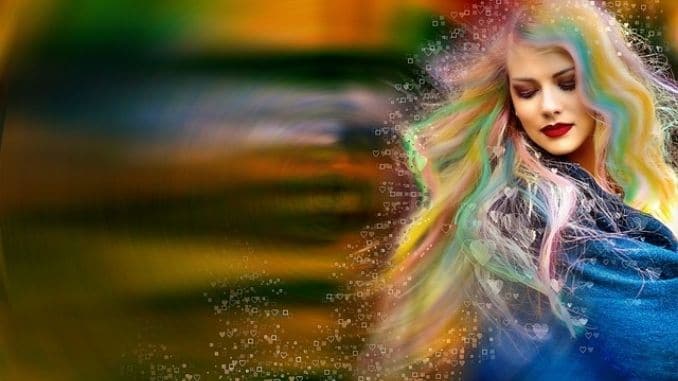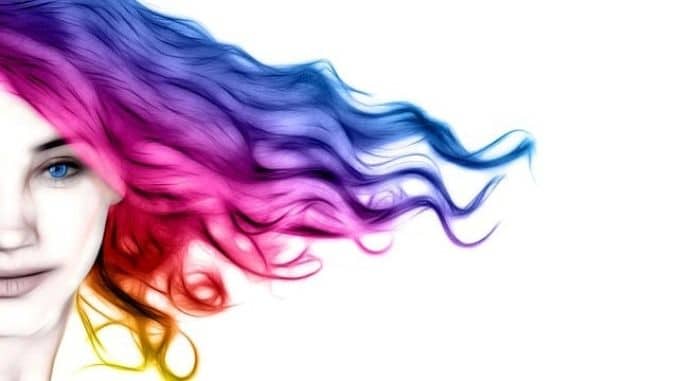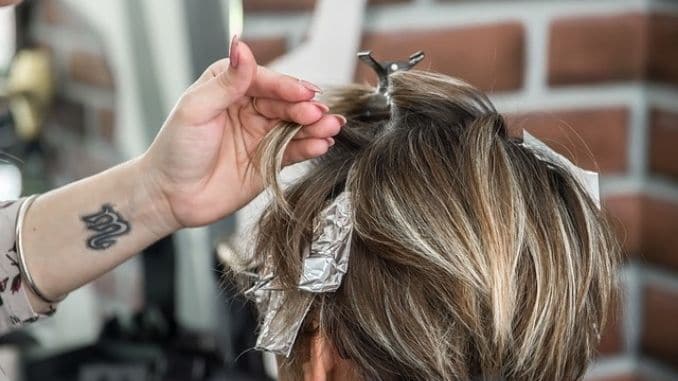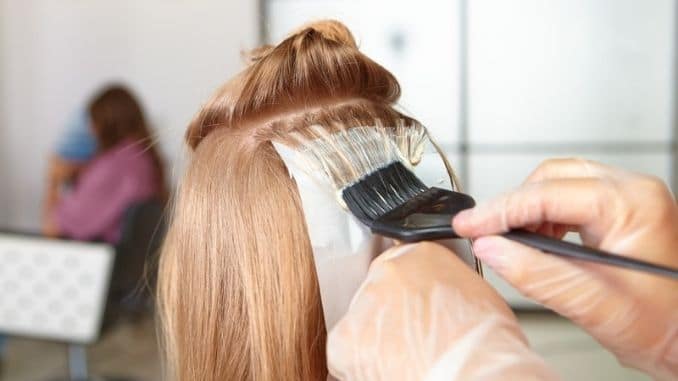
According to recent statistics, 34.37 million Americans used hair-coloring products four or five times in the year 2018. About 8.33 million used them six to 13 times, and 1.17 million used them 14 times or more.
Although both men and women enjoy using color, women use it more often to change things up or because they’re bored. Some respondents to a “Today” survey said they had changed their hair color 100 times in 50 years.
However, recently, some of us have started to grow a little uncomfortable with all this color. There’s information available now that suggests the ingredients in hair dyes aren’t always safe, and that we may be exposing ourselves to toxins that could affect our health.
Do we have to be worried about coloring our hair and, if so, are there safer options available?
Types of Hair Dye
Most hair dyes can be fit into one of the following categories:
- Temporary: The least disruptive kind of hair color, temporary hair dye allows people to experiment with different colors without any long-term commitment. It can be applied as a liquid, chalk, powder or from a mascara wand. And, it works only on the surface of the hair, coating the outside of the shaft and lasting only one or two shampoos before it washes out.
- Semi-permanent: The next step up from temporary, semi-permanent hair dye also applies color only to the surface of the hair, blending in and enhancing the hair’s natural color. It can’t be used to change the hair color. The color lasts longer than temporary color, fading progressively during a period of about three to six weeks or about eight shampoos.
- Demi-permanent: An intermediate step between semi-permanent and permanent, demi-permanent hair colors are mixed with a “developer” to help penetrate the hair shaft rather than coating it. That means it tends to last longer than semi-permanent. But it’s not considered as damaging to the hair as permanent color can be.
- Permanent: One of the most disruptive types of hair dyes, permanent hair dye requires more complex chemical processing and penetrates the hair shaft more deeply. An “oxidizer,” such as hydrogen peroxide or ammonia, is mixed with the coloring agent before application to help open the hair shaft before depositing color. That’s why permanent hair dyes are often called “oxidative” dyes. This allows you to change your hair color and for your color to last longer before it starts to fade.
All chemical processes, which include demi-permanent and permanent hair dyes, reduce the elasticity of hair and increase the chances of breakage. Deep conditioning treatments used before and after coloring help to protect hair.
When Hair Dyes May Be Dangerous
The National Cancer Institute (NCI) states that more than 5,000 different chemicals are used in hair dye products. Before the 1970s, hair dyes were likely to contain aromatic amines, which caused cancer in animals. These were most concerning for hairdressers and barbers who used them regularly. Fortunately, manufacturers stopped using them in the 1980s.
Some large population studies found an increased risk of bladder cancer in professional hairstylists, but researchers blamed these findings on the use of older dyes with aromatic amines. Studies have been mixed on whether hair dyes may increase the risk of other types of cancer, like non-Hodgkin lymphoma, leukemia, and breast cancer. When looking at cancer risk, study results typically show an absence of risk for those who started to use hair dye after 1980, although this could be because hair dyes became safer or because women had lower cumulative exposure to it.
Based on its review of the evidence, the International Agency for Research on Cancer (IARC) states that personal use of hair dyes is “not classifiable as to its carcinogenicity to humans.”
The National Toxicology Program (NTP) does not classify exposure to hair dyes as having potential to cause cancer either, but it has classified some chemicals that are or used to be used in hair dyes as “reasonably anticipated to be human carcinogens.”
The problem is that some of the chemicals in the dyes can be absorbed through the scalp in high enough amounts that they may affect health over time.
Potentially Toxic Ingredients in Hair Dye
Some of the ingredients in hair dye that may affect health negatively include the following:
- Ammonia: This helps pull apart layers of the hair’s proteins so the dye can gain access to the hair shaft. Ammonia irritates the respiratory system and is a potential hormone disruptor.
- Peroxide: This helps remove the natural color from hair so that it’s ready for a new color. It changes the structure of the hair and can make it more brittle.
- p-Phenylenediamine (PPD): One of the many coal-tar colors, which are derived from petroleum, this ingredient is used for dark color shades to help “stick” the color to the hair. It’s been linked with some forms of cancer and can irritate the eyes. It’s also one of the most common causes of allergic reactions in hair colorings.
- Toluene-2,5-diamine: Some hair dyes contain this ingredient instead of PPD to help activate the coloring pigments. It’s less aggressive than PPD, but it can damage nerves and has been linked to congenital disabilities and pregnancy loss. It can also cause allergic reactions, although it’s less likely to do so than PPD.
- Resorcinol: This chemical is used to help bond the dye to the air. It’s thought to be a hormone disruptor and can also cause scalp irritation.
- Quaternium-15: This is a preservative used in some dyes. It can release formaldehyde as a byproduct, and formaldehyde is a known carcinogen.
- Lead acetate: A color additive for dark hair dyes, this ingredient has been linked with anemia and neurological problems.
How to Reduce any Risks Associated With Hair Dye
It can be concerning to read about the studies linking hair dye with health problems and when we realize what chemicals we’re putting on our scalp, we may wonder if we have to stop using hair dye altogether.
There are several things we can do to reduce our risk of having any trouble. Start with these tips:
- Be careful: If you dye your hair yourself, be sure to wear gloves, and try not to rub the dye into your scalp. Leave it on only as long as is necessary, and rinse thoroughly.
- Patch test: Because some hair dye ingredients can cause allergic reactions, it’s essential to always do a patch test on a small area of your skin before trying a new product.
- Go easy: You can reduce your exposure to any chemicals in hair dyes by going for a longer period between colorings.
- Take care: The more careful you are with your hair, the longer the color will last. Use a gentle, color-safe shampoo, apply repairing conditioner regularly, limit shampooings and protect your hair from the sun.
- Choose safer products: In response to the concerns about potentially toxic hair dyes, many manufacturers have made safer versions. Find out more about these below.
- Find a safe salon: Some hair salons are committed to using less-toxic formulas and will work with you to find a safer solution.
How to Choose a Safer Hair Dye
Below are some recommendations to help you find a hair dye that contains fewer toxic chemicals.
Check Your Brand
The Environmental Working Group (EWG) maintains a database of hair-coloring products. You can check your brand against this database to see how the EWG rates it in terms of safety and toxicity.
Set Yourself Free
Many companies are now producing hair dyes that are free of some of the most toxic chemicals. Although all hair dyes (except henna) contain some chemical ingredients, those that advertise being “free” of ingredients like ammonia, PPD and resorcinol expose you to fewer dangerous ones while still delivering good color results.
Practice Brand Loyalty
Some brands, like Aveda and LOGONA, are known for making hair colors that use fewer harsh chemical ingredients and more “natural” and plant-based ingredients. SANTE, Tints of Nature and Good Dye Young are other manufacturers who are working to make effective hair color products with fewer dangerous chemicals.
Use Henna
Henna is the only truly natural hair-coloring ingredient available. It produces only a reddish-brown color, however, so its use is limited. Any other henna-based product that advertises creating a different color has been mixed with other dyes.
What About Organic?
The United States Food and Drug Administration (FDA) doesn’t regulate the words “organic” or “natural” in hair dyes, which means that manufacturers can use these words on their products whenever they want to, regardless of what’s actually in the product.
On the whole, organic hair dyes do tend to contain fewer chemicals. Organic doesn’t mean “chemical-free” in the world of hair coloring products, however, so do be aware that there will still be some chemicals in the formula. Usually, organic hair dyes avoid ammonia and rely more on botanical ingredients to do the job.
Go All Natural
If you want to avoid chemicals entirely, you can help cover gray hairs and enhance your natural color with some ingredients you may already have in your kitchen. Coffee, for instance, can help darken hair and cover some grays. Black tea has a similar effect. Chamomile can help enhance blonde hair while rooibos tea works for redheads. Beet and carrot juice are also good options for redheads.
Mix these drinks with some leave-in conditioner and allow to sit on your hair for about an hour, then rinse. You may need to repeat the process a few times to get the results you want.
For the best foods to heal your body, check out The Best Foods that Rapidly Slim & Heal in 7 Days, here!


